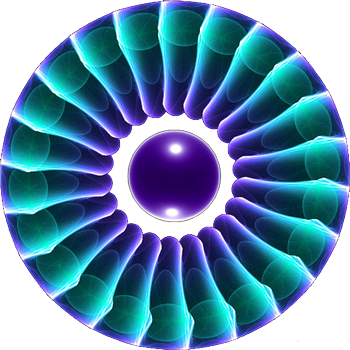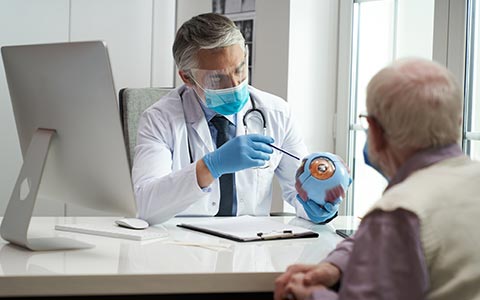EYE TREATMENTS & CONDITIONS IN ROSWELL, NM
For the best Ophthalmological care in Roswell, NM, trust Engstrom Cataract and Laser Center. We strive to bring you the most recent and relevant information regarding your health concerns and our staff will ensure to explain in detail using terms that you will understand.
We like to believe that a healthy body means a healthy outlook on life, and it is our job to help make sure you can enjoy life to its fullest. Your sight precious and deserves the very best of care. Whether you need simple checkup or require delicate surgery, (575) 625-0123.
OUR SPECIALIZED EYE CONDITIONS & TREATMENTS:
- Diabetic Retinopathy Evaluations and Treatment
Diabetic retinopathy is best diagnosed with a comprehensive dilated eye exam. For this exam, drops placed in your eyes widen (dilate) your pupils to allow your doctor to better view inside your eyes. The drops may cause your close vision to blur until they wear off, several hours later. Without diagnosis and treatment, diabetic retinopathy can cause blindness in as little as 2 years.
During the exam, your eye doctor will look for:
- Abnormal blood vessels
- Swelling, blood or fatty deposits in the retina
- Growth of new blood vessels and scar tissue
- Bleeding in the clear, jelly-like substance that fills the center of the eye (vitreous)
- Retinal detachment
- Abnormalities in your optic nerve
- Methotrexate Macular Toxicity and Hydroxychloroquine (Plaquenil) Toxicity Monitoring
Screening a baseline fundus examination should be performed to rule out preexisting maculopathy. Begin annual screening for patients on acceptable doses and without major risk factors.
Screening tests are automated visual fields plus optical coherence tomography (OCT). These should look beyond the central macula and fundus exams can show damage topographically. Toxicity Retinopathy is not reversible, and there is no present therapy. Recognition at an early stage (before any vision loss) is important to prevent central visual loss.
- Corneal Transplant Evaluations and Surgery for Decompensated Cornea
A cornea transplant is most often used to restore vision to a person who has a damaged cornea. A cornea transplant may also relieve pain or other signs and symptoms associated with diseases of the cornea.
A number of conditions can be treated with a cornea transplant, including:
- A cornea that bulges outward (keratoconus)
- Fuchs' dystrophy
- Thinning of the cornea
- Cornea scarring, caused by infection or injury
- Clouding of the cornea
- Swelling of the cornea
- Corneal ulcers, including those caused by infection
- Complications caused by previous eye surgery
- Dry Eye or Ocular Surface Disease
Dry Eye Disease (DED), also known as Ocular Surface Disease (OSD) is a very complex condition that is chronic and progressive. More than 50% of those having the condition do not report symptoms, especially in the early stages. If dry eye disease is identified early, when mild, it is easier to treat, helping to slow the progression. The surface layers of the eye consist of the conjunctiva (clear covering of the white of the eye) and the cornea (clear covering over the colored iris and black pupil). These are both covered with a layer called the epithelium. In eyes with ocular surface disease, this epithelial layer is damaged. This damage may result from a wide variety of conditions involving the eye, the eyelids, and even the rest of the body. Damage to the epithelium can cause pain, redness, poor vision, and ultimately can lead to permanent corneal or conjunctival injury. Treatment depends on the underlying cause of the ocular surface disease.
- Eye Muscle Imbalance Evaluation and Surgery
Eye muscle surgery is done to treat two of the most common childhood eye problems—strabismus and/or nystagmus.
Strabismus (stra-BIZZ-muss) is an eye problem in which the eyes are misaligned—meaning that they point in different directions. One eye may look straight ahead, while the other eye turns inward, outward, upward or downward. Sometimes both eyes are affected. Strabismus affects about 5 percent of children, and is sometimes referred to as being “cross eyed” or “wall eyed.”
Nystagmus (nigh-STAG-muss) is an eye problem which causes the eyes to make involuntary (unintentional) movements or “wiggle.” It usually affects both eyes and often is more visible when the eyes are looking in a particular direction. Nystagmus can cause vision problems and often occurs with strabismus and amblyopia (am-blee-OH-pee-uh), also known as lazy eye.
- Macular Degeneration Monitoring for Wet and Dry ARMD
An eye disease that causes vision loss.
Macular degeneration causes loss in the center of the field of vision. In dry macular degeneration, the center of the retina deteriorates. With wet macular degeneration, leaky blood vessels grow under the retina.
Blurred vision is a key symptom.
A special combination of vitamins and minerals (AREDS formula) may reduce disease progression. Surgery may also be an option.
- Eye Infections, Eye Injuries, Foreign Body Removal
We provide emergency services for eye infections, eye injuries and other eye urgencies. State of the art equipment allows us to examine the front surface of the eye and also digitally scan inside the eye for infection or damage. Our eye care expert accommodates many eye emergencies such as:
- Eye infections
- Foreign materials stuck in the eyes
- Eye trauma
- Scratched eyes
- Sudden loss of vision in one or both eyes
- Lost or broken contact lenses or eyeglasses
- Flashes of light in the vision
- “Floaters” in the vision
- Red or painful eyes
- Dislodged contact lenses
- Uncomfortable, itchy, or irritated eyes
Studies have shown that an overwhelming number of emergency room visits could have been treated by an eye doctor. These ranged from foreign bodies to severe eye allergies to eye infections as the most common reasons for emergency room visits. It is not always necessary to go to an emergency room for eye emergencies.
- Tear Duct System Evaluations
Tears on the surface of our eyes drain from the eyelids to the nose through a small drainage system called your lacrimal system. Two openings in the upper and lower eyelids (punctum) empty tears into small canals called canaliculi. These canals move tears to a sac near the nose (lacrimal sac). The lacrimal sac narrows into a tunnel called the nasolacrimal duct that empties tears into your nasal cavity. A blockage can occur at any point in this system.
The most common signs and symptoms of blocked tear duct include:
- Excessive tearing
- Mucous in the corner of the eye or along eyelashes
- Blurred vision
- Recurrent eye infections
- Painful swelling in the inner corner of the eye
- Crusting of the eyelids
At the time of your evaluation, the Doctor will perform a complete examination of your tear drainage system. Your lacrimal system may be flushed with saline solution to check how well the system is draining and help identify the location of the blockage.
- Cosmetic and Non-cosmetic Eyelid Surgery
Blepharoplasty
Blepharoplasty is the name of the surgery that removes or repositions fat to reduce puffiness in addition to trimming excess skin away. During an upper eyelid blepharoplasty, the excess skin that can hang over lashes is removed.
The procedure is similar for a lower eyelid blepharoplasty. However, in some instants instead of excising the skin, we tighten the skin via laser resurfacing or TCA chemical peels, and the fat gets removed or repositioned into the tear trough.
Ptosis Repair Surgery
This procedure involves lifting the upper eyelids. This is usually done by manipulating the eyelid muscles that can weaken with age. During the external approach, the surgeon can also trim away excess fat and skin. The ptosis can be repaired internally with no incision over the eyelid.
- Pterygium Excision, Chalazion Drainage
Pterygium is a benign growth of the conjunctiva (lining of the white part of the eye) that grows into the cornea, which covers the iris (colored part of the eye). A pterygium usually begins at the nasal side of the eye. It can be different colors, including red, pink, white, yellow, or gray.
Patients with pterygium often first notice the condition because of the appearance of a lesion on their eye or because of dry, itchy irritation, tearing or redness. Pterygium is usually first noticed when it is confined only to the conjunctiva. At this stage it is called a pingueculum. Once it extends to the cornea it is termed a pterygium and can eventually lead to impaired vision.
Styes and chalazions are small fluid-filled cysts that develop along the eyelid as a result of an infection or blocked oil gland. While these bumps do not usually lead to any serious complications, they may cause pain, swelling and tearing of the eye. Larger chalazions may gradually obstruct vision.
A stye appears on the eyelid as a small red bump, while a chalazion is similar but usually larger and not as painful. Styes usually heal within a week, while chalazions can take up to a few months.
Many styes and chalazions go away on their own with no need for treatment other than warm, wet compresses. You maybe prescribe antibiotic eye drops or recommend over-the-counter treatments for those that do not heal on their own. Patients should avoid wearing makeup or contact lenses until after the stye or chalazion has healed.

Slide title
Dr. Melgen did both of my cataract surgeries & my false cataract surgery. She is an excellent surgeon.
— Butch W.
Button
Went to dr engstrom for a second opinion on a diagnosis a dr did here in Carlsbad . I have to give him thanks for his staff and his help he helped me get back to my daily activities such as driving and working with out having to patch my eye . Still not out of the woods but he gave me so much information and explained it to me in ways I could understand . Thank you for having me in your care and getting my prism glasses
— Mari Guadalupe P.
Button
Slide title
Very informative in the coming procedure!
Dr. Engstrom is a wonderful professional, and at the same time, a wonderful down to earth kinda guy! I love him! Wish his wife and staff the very best!
— Shirley B.

My daughter who is 10 years old was recently seen here and the staff is excellent! She was struggling with learning to use the contact and they were very patience and encouraging! Couldn’t have asked for a better experience.
— Megan C.

The new smile reflex was amazing! I had -4.75 in bothe eyes and was able to see down the street 4 hours later! very professional service! They changed my life!
— Steven J.

The entire Engstrom Center from reception to doctors have become so much more efficient and friendlier with their move to the bigger, better facility on Sherrill Ln.
I’m happy for them in their new space.
— Julia M.

Dr Melgren and her staff are FANTASTIC! She explained my Glaucoma diagnosis very well, and put all my fears to rest! The state-of-the-art exam, along with compassion and caring, made this the best eye appointment ever!
— Brenda B.

Slide title
Love all the staff and Drs. I'm very blessed to have found such a wonderful team. Thank you All.
— Jean H.

These folks are the best, have taken great care of me.
Button
Everyone was very friendly and helpful. Answered all my questions and made me feel at ease setting up my cataract surgery.Dr Mellgren explained the procedure and made my decision easy to make having her do my surgery!

Slide title
It was very pleasant. All persons I spoke with were friendly. All answered my questions and tried to make me feel comfortable. Dr. Melgren was very kind.
Button
All staff friendly and professional. Dr. Mellegren was excellent in answering all my questions and helping me understand what was ahead for me. Well worth the 6 hour drive!

Slide title
The staff is wonderful, very helpful and understanding. The doctors are some of the best, most compassionate doctors I h as ve had to deal with. Dr. Mellgren is so patient and kind. Very knowledgeable and an excellent doctor.

Slide title
Dr. Melgen did both of my cataract surgeries & my false cataract surgery. She is an excellent surgeon.
— Butch W.
Button
Went to dr engstrom for a second opinion on a diagnosis a dr did here in Carlsbad . I have to give him thanks for his staff and his help he helped me get back to my daily activities such as driving and working with out having to patch my eye . Still not out of the woods but he gave me so much information and explained it to me in ways I could understand . Thank you for having me in your care and getting my prism glasses
— Mari Guadalupe P.
Button
Slide title
Very informative in the coming procedure!
Dr. Engstrom is a wonderful professional, and at the same time, a wonderful down to earth kinda guy! I love him! Wish his wife and staff the very best!
— Shirley B.

My daughter who is 10 years old was recently seen here and the staff is excellent! She was struggling with learning to use the contact and they were very patience and encouraging! Couldn’t have asked for a better experience.
— Megan C.

The new smile reflex was amazing! I had -4.75 in bothe eyes and was able to see down the street 4 hours later! very professional service! They changed my life!
— Steven J.

The entire Engstrom Center from reception to doctors have become so much more efficient and friendlier with their move to the bigger, better facility on Sherrill Ln.
I’m happy for them in their new space.
— Julia M.

Dr Melgren and her staff are FANTASTIC! She explained my Glaucoma diagnosis very well, and put all my fears to rest! The state-of-the-art exam, along with compassion and caring, made this the best eye appointment ever!
— Brenda B.

Slide title
Love all the staff and Drs. I'm very blessed to have found such a wonderful team. Thank you All.
— Jean H.

These folks are the best, have taken great care of me.
Button
Everyone was very friendly and helpful. Answered all my questions and made me feel at ease setting up my cataract surgery.Dr Mellgren explained the procedure and made my decision easy to make having her do my surgery!

Slide title
It was very pleasant. All persons I spoke with were friendly. All answered my questions and tried to make me feel comfortable. Dr. Melgren was very kind.
Button
All staff friendly and professional. Dr. Mellegren was excellent in answering all my questions and helping me understand what was ahead for me. Well worth the 6 hour drive!

Slide title
The staff is wonderful, very helpful and understanding. The doctors are some of the best, most compassionate doctors I h as ve had to deal with. Dr. Mellgren is so patient and kind. Very knowledgeable and an excellent doctor.









